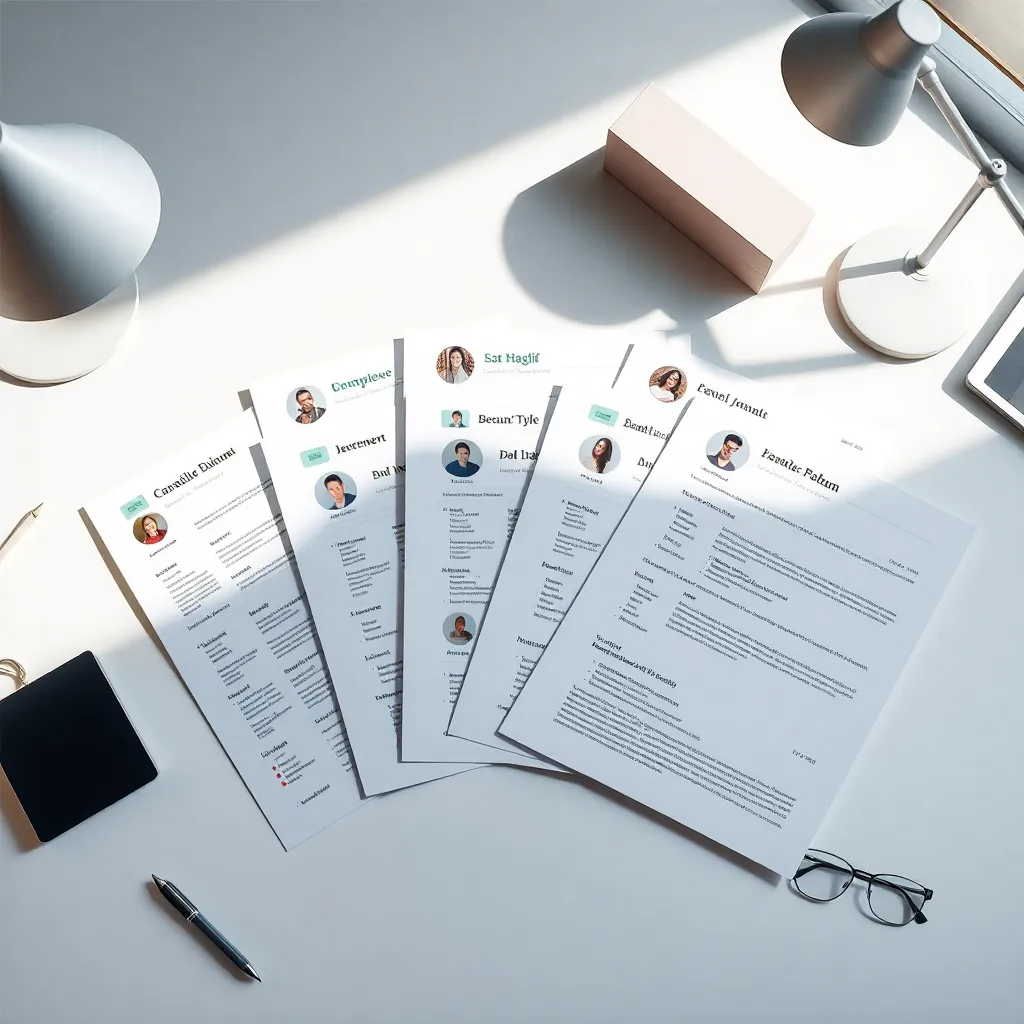Creating an effective resume can be challenging, especially when you’re unsure how it should look at your particular career stage. Whether you’re just starting out or have decades of experience, studying well-crafted resume examples tailored to your career level can provide valuable insights and inspiration for your own document.
Understanding Resume Examples by Career Level
Resume expectations vary significantly across career stages. Entry-level candidates need to emphasize education and potential, while executives must showcase strategic leadership and organizational impact. Hiring managers adjust their evaluation criteria based on the expected experience level for each position.
Rather than using generic templates, studying targeted resume examples allows you to understand the specific elements that resonate with employers at your career stage. Let’s explore some outstanding examples across different career levels and analyze what makes them effective.
Entry-Level Resume Examples
Recent Graduate Example
Fresh graduates face the common challenge of limited work experience. Effective entry-level resumes address this by strategically highlighting academic achievements, relevant coursework, and transferable skills.
Consider this example of a Data Analyst (No Experience):
- Strengths: Showcases academic projects (like “Sales Trends Analysis”) to demonstrate analytical capabilities
- Education Focus: Prominently features relevant coursework and a strong GPA
- Skills Section: Includes technical certifications in Power BI and Python to compensate for limited work history
- Internship Highlights: Quantifies achievements from short-term experiences
This approach works because it demonstrates potential through academic accomplishments while showing initiative through certifications. The entry-level resume example effectively bridges the gap between classroom and workplace.
Career-Changer Example
A Marketing Intern transitioning from another field:
- Transferable Skills: Highlights relevant abilities from previous roles (communication, project management)
- Quantified Impact: Mentions specific achievements like growing social media following by 1,200+ followers
- Relevant Activities: Includes event coordination experience from campus organizations
- Additional Value: Notes bilingual fluency as a supplementary skill
Career changers should focus on tailoring your resume to job descriptions by emphasizing transferable skills and demonstrating passion for the new field through coursework, certifications, or volunteer experience.
Mid-Career Professional Resume Examples
Mid-career professionals need to demonstrate progression, increasing responsibility, and measurable impact. These resumes should balance technical expertise with emerging leadership capabilities.
Technical Professional Example
An IT Support Specialist with 5+ years of experience:
- Quantified Workload: Specifies handling “15+ daily troubleshooting cases”
- Technical Credentials: Lists relevant certifications like CompTIA Security+
- Growth Trajectory: Shows progression from entry-level to senior technical roles
- Project Leadership: Highlights situations where they led technical initiatives
This resume format sample effectively balances technical proficiency with growing leadership responsibilities, making it clear the candidate is ready for advancement.
Management Track Example
A Marketing Manager with 7+ years of experience:
- Measurable Results: “Grew organic traffic by 40% YoY through comprehensive SEO strategy”
- Budget Responsibility: “Managed $250K advertising budget with 18% ROI”
- Team Leadership: Highlights experience directing cross-functional teams
- Strategic Vision: Demonstrates contribution to broader business objectives
This example works because it shows both technical marketing expertise and business acumen. The resume uses resume formatting that emphasizes results over responsibilities, which is crucial for mid-career professionals.
An HR Manager example shows similar strengths:
- Key Metrics: “Reduced employee turnover by 22% through revamped onboarding process”
- Scale: “Led DEI training initiatives for 150+ staff members”
- Process Improvement: Highlights systems optimization and policy development
Executive and Senior-Level Resume Examples
Executive resumes must demonstrate strategic vision, organizational leadership, and transformational impact. These documents are typically more achievement-focused and less concerned with day-to-day responsibilities.
C-Suite Executive Example
A Chief Financial Officer (CFO):
- Leadership Impact: “Spearheaded merger integration saving $4M in operational costs”
- Scale of Responsibility: “Oversaw $50M annual budget across multiple business units”
- Strategic Vision: Focuses on business transformation and long-term planning
- Board-Level Communication: Demonstrates experience presenting to executive leadership
This example succeeds by focusing on organizational impact rather than routine financial responsibilities. The cool looking resumes at this level maintain professionalism while clearly communicating executive presence.
Senior Specialist Example
A Director of Business Development:
- Growth Metrics: “Expanded market share by 34% in Asia-Pacific region”
- Revenue Impact: “Negotiated strategic partnerships worth $12M in annual revenue”
- Industry Influence: Mentions speaking engagements and thought leadership
- Cross-Functional Leadership: Shows ability to influence without direct authority
For specialists who aren’t on a management track, the focus should be on subject matter expertise, organizational influence, and strategic contributions rather than team size.
Common Elements of Successful Resumes Across All Levels
Despite the differences between career stages, certain elements are consistently found in effective resumes:
- Action-Oriented Language: Powerful verbs like “Led,” “Optimized,” and “Developed” create impact
- Quantifiable Achievements: Numbers provide context and scale (percentages, dollar amounts, team sizes)
- Skills Balance: Technical abilities paired with soft skills like leadership and communication
- ATS-Friendly Format: Clean design with standard headings for applicant tracking systems
- Tailored Content: Customization to specific job requirements
The best examples use a clean resume template with clearly defined sections and a logical flow of information.
Applying These Examples to Your Own Resume
To adapt these insights to your own resume:
- Identify Your Level: Honestly assess your career stage and align expectations accordingly
- Study Relevant Examples: Focus on examples from your industry and experience level
- Extract Key Techniques: Note the specific approaches that work for your situation
- Customize Format: Choose a structure that highlights your specific strengths
- Quantify Achievements: Convert responsibilities into measurable accomplishments
- Get Feedback: Have industry professionals review your draft
Students might benefit from free student resume templates as a starting point, while professionals in specialized fields like finance should study accounting experience examples for industry-specific guidance.
If you’re struggling to create an effective resume, consider using ResuFit to generate tailored, ATS-optimized resumes in minutes. Their AI-powered platform analyzes job descriptions and automatically customizes your resume to highlight the most relevant skills and experiences for each position.
For creative fields, an art resume template might be more appropriate, allowing for greater design flexibility while maintaining professional standards.
Whether you DIY or seek affordable resume writing services, the key is ensuring your resume clearly communicates your value at your specific career stage. By studying examples tailored to your experience level, you can create a compelling document that resonates with hiring managers and advances your career goals.

